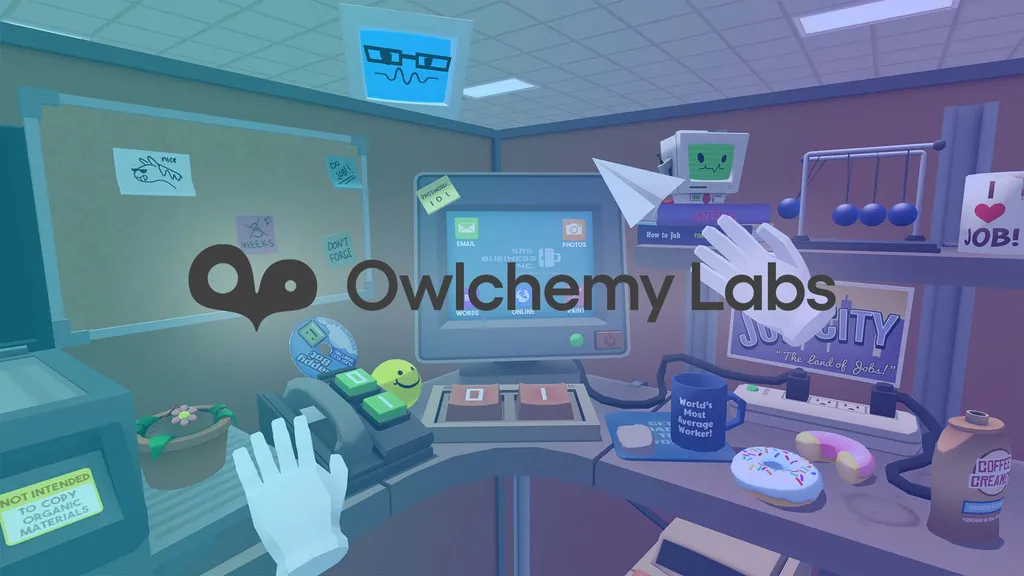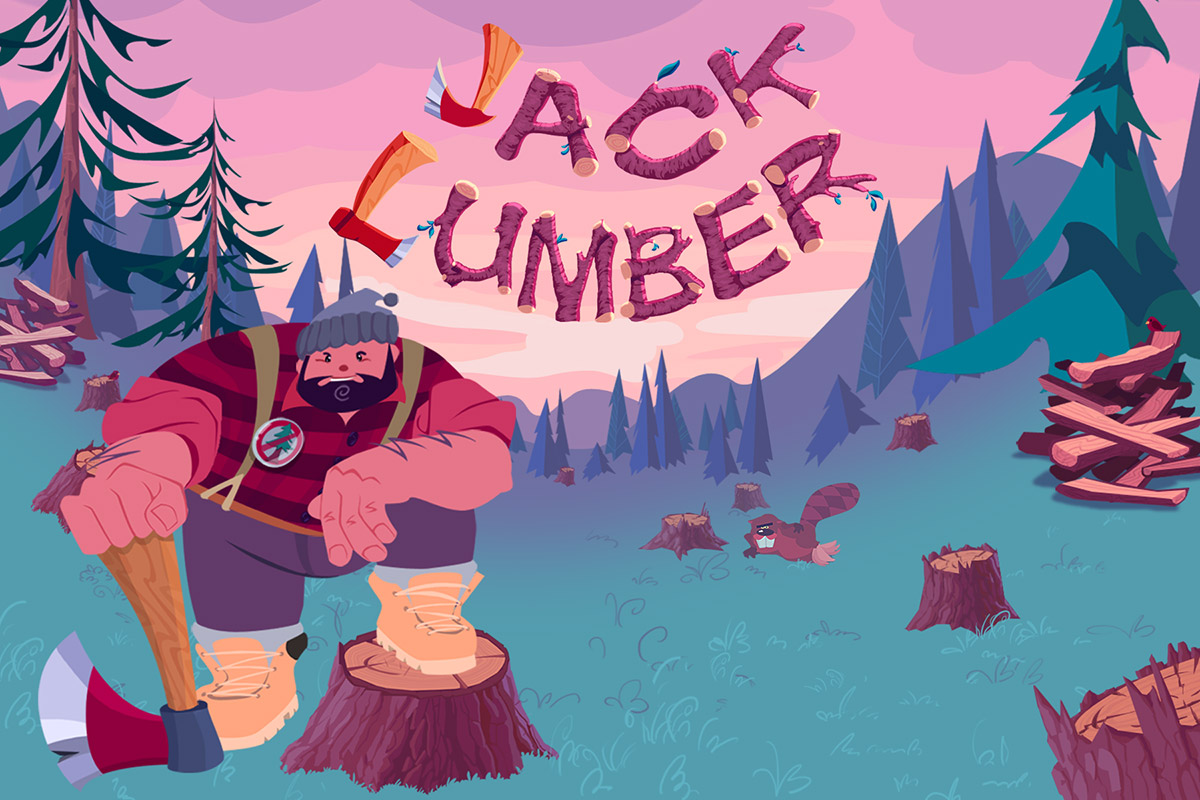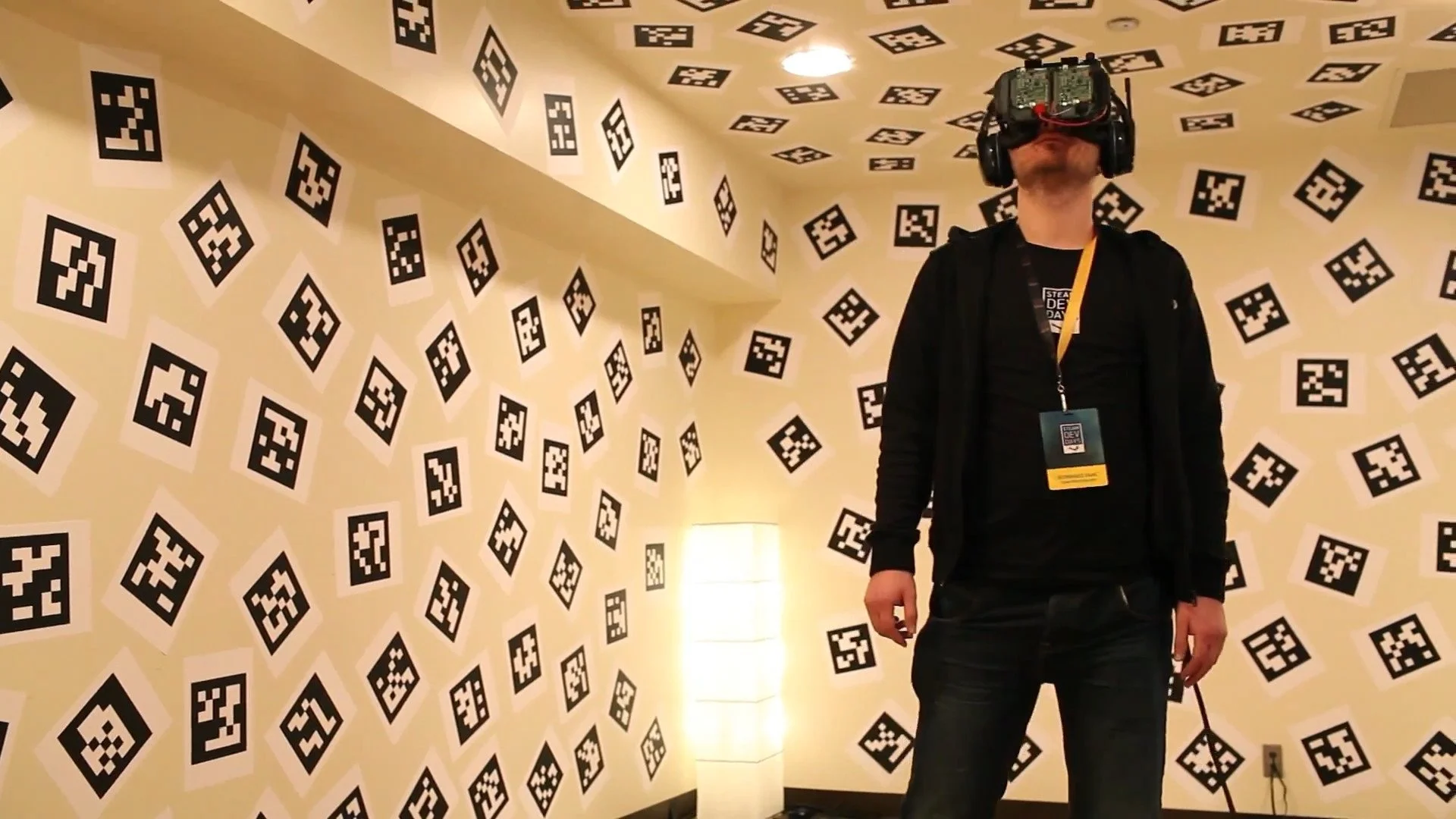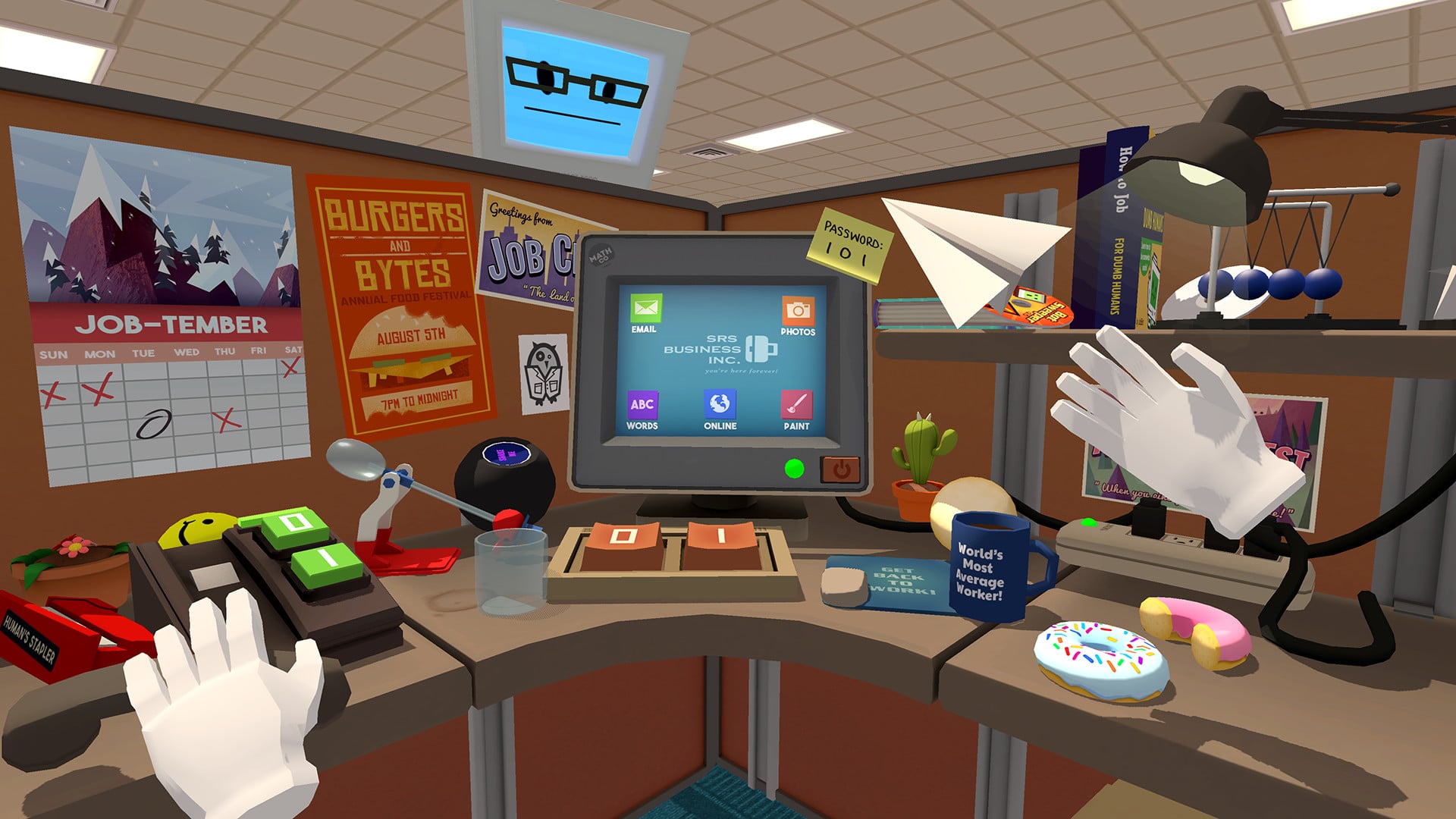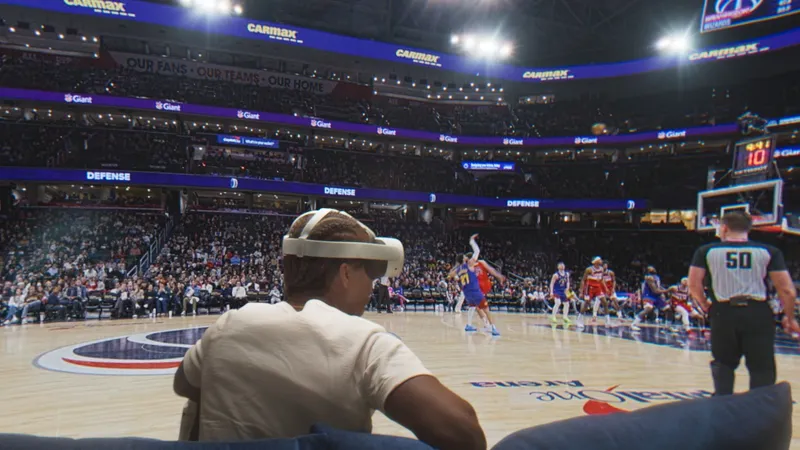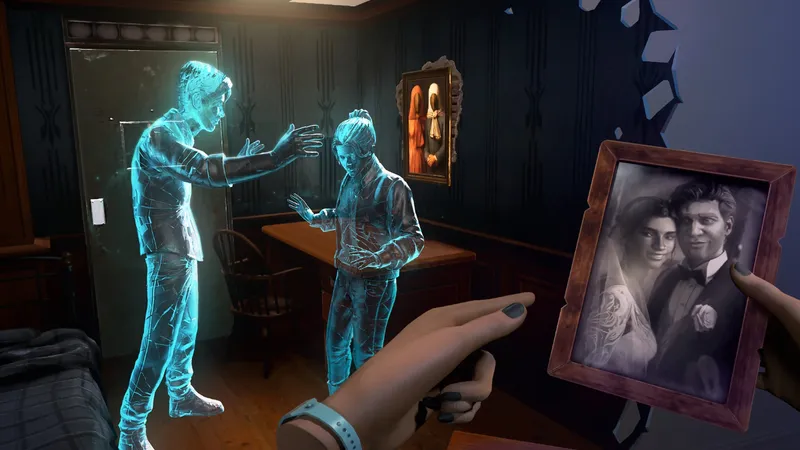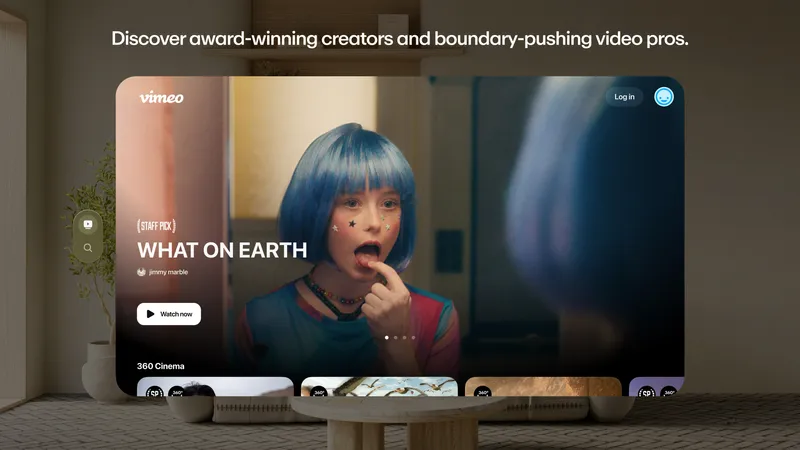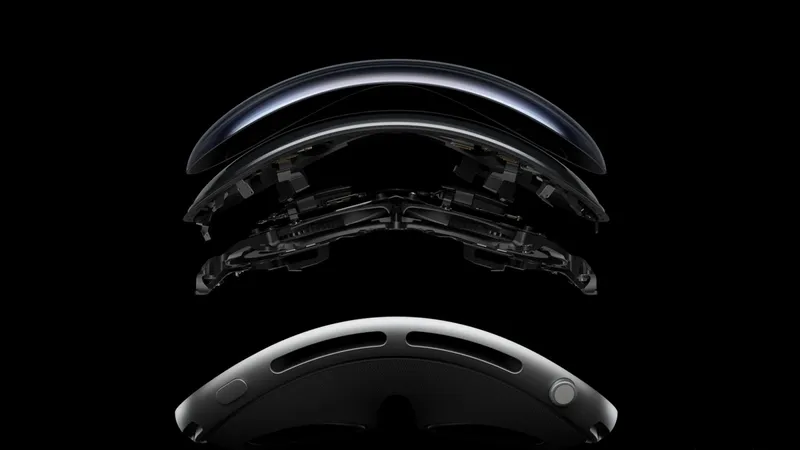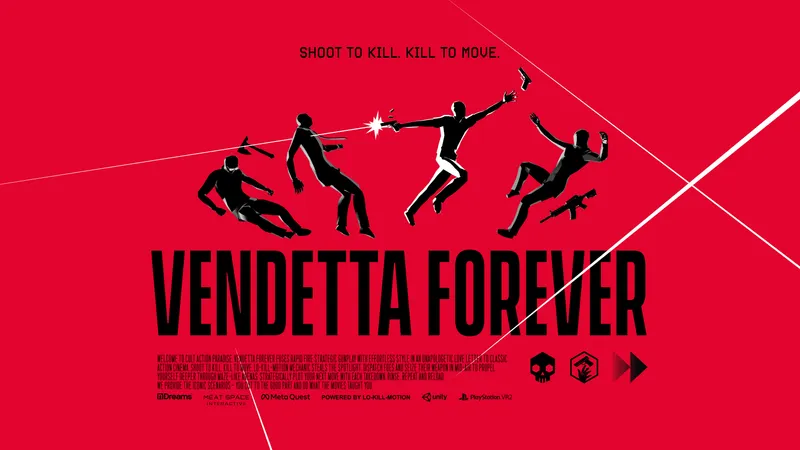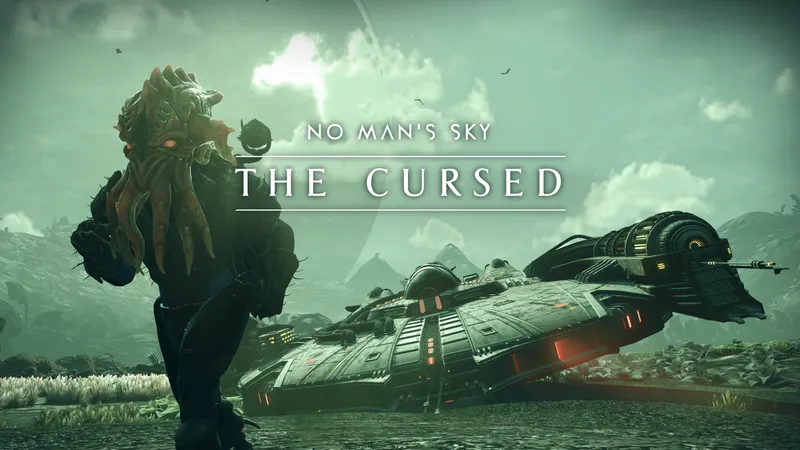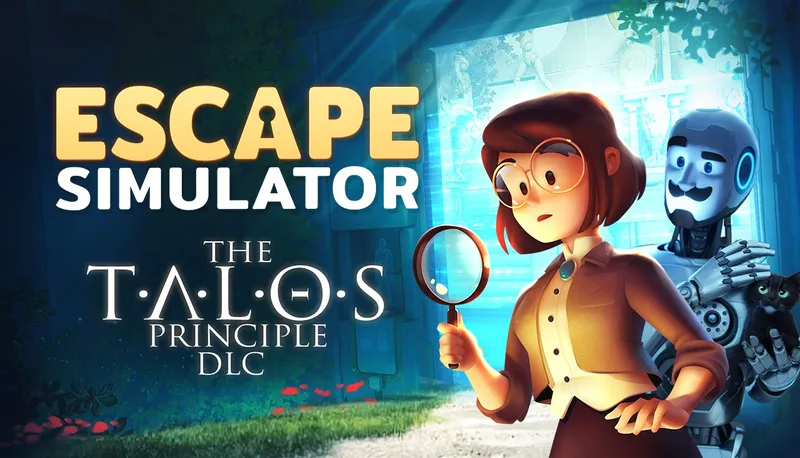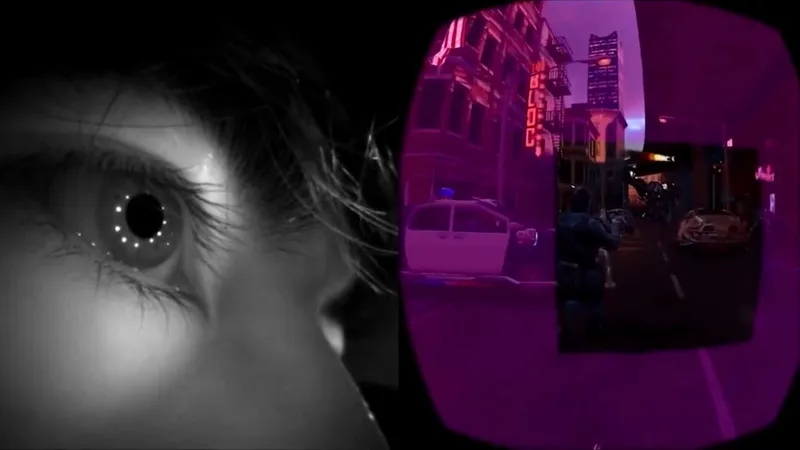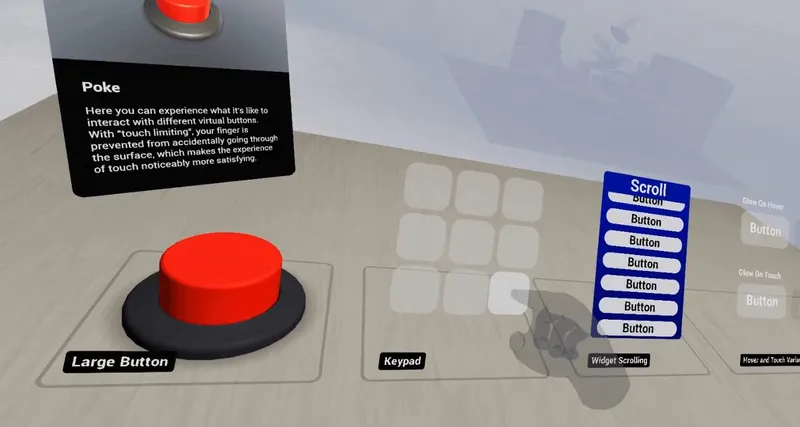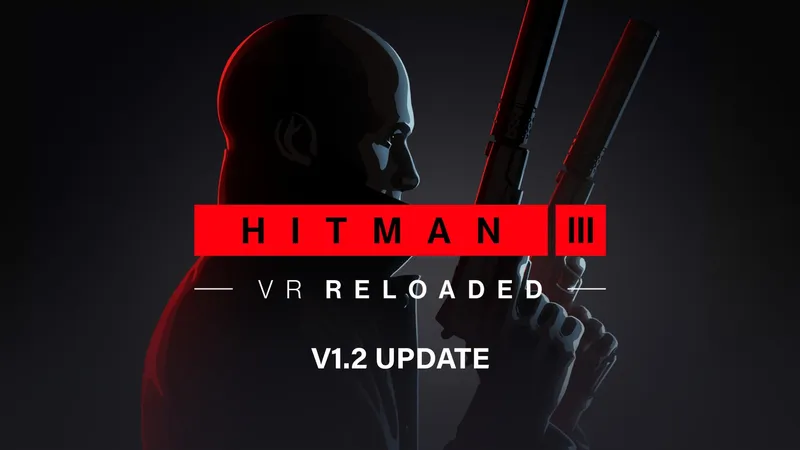We chronicle a partial history of one of VR’s best-known developers: Owlchemy Lab.
I’m listening back through an interview with Andrew Eiche and Devin Reimer of Owlchemy Labs and we’re talking about the subtle genius of Half-Life: Alyx’s distance-grab mechanic. It’s part of a 90-minute chat that weaves through the recent history of VR and the wide range of attempts by developers to zero in on products with an audience. Our conversation takes a detour into how Crisis VRigade is secretly one of the purest expressions of the VR shooter and the conversation somehow winds back to their belief that hand-tracking is the next big frontier for VR mass adoption, and others just aren’t seeing it yet.
It’s a fascinating talk and equally insightful to listen back to, but it wasn’t exactly what I meant to discuss. Their studio works to make VR software as immersive, comfortable and accessible as possible at a time when VR hardware is often the opposite. It won them immense success with Job Simulator and their subsequent releases have recieved positive reviews from critics and fans, as well as charting in top seller lists (though, notably not as highly as Job Sim). Is that a good showing four games on from the launch of the Oculus Rift and HTC Vive?
Owlchemy certainly isn’t out to make VR’s most explosive shooter or epic sword-swinging RPG, with the studio instead focusing its work carefully around existing constraints to craft experiences within current limits. Its been a bit of an experimental research and development lab even while, in recent years, the studio pursued this work operating under the umbrella of one of the world’s largest tech companies. Even today, Job Simulator sits on top sellers lists as one of VR’s most recognized and successful titles, not to mention being followed by multiple successors that each pushed VR design further down this very specific line of thinking.
“We’ve got to remember that today,” Eiche once said to me, “we’re getting more new players into VR than we are getting former players.”
While the studio’s leaders are famously practiced at smiling through questions aimed at uncovering their future plans, looking back at the unique studio’s path and focused design efforts, we can still find hints pointing to Owlchemy and VR’s future.
Owlchemy’s Origins
Owlchemy started in 2010 just when market fatigue and saturation were settling into the mobile gaming market.
“Mobile just kept going downhill and our games were continuously doing better, but we were following that trajectory down,” Reimer says.
They were working on titles like Jack Lumber which, as Reimer explained it, is all about being “a supernatural lumberjack out for vengeance on the forest because the evil tree killed his granny.” While the slapstick humor in their work continues today, gone are the days of keeping the lights on by developing for dozens of platforms fueld by hardware maker partnerships, like a specific port for a Blackberry phone that Eiche says “maybe a hundred humans ever bought” and an HP laptop with a Leap Motion hand-tracking sensor built into it.
“That’s how we survived,” Reimer says.”When people talk about like startup companies and stuff like that, they always like paint over it as this like perfect genesis…That’s always the way that it works, but that’s not the way that real companies ever start.”
The company attempted an approach where they would pursue a project under contract for someone else and then return to their own intellectual property. They even did a Kickstarter for a game called Dyscourse, to which Reimer says they learned to “never, ever” do crowdfunding again. They also started giving talks about surviving in the harsh wilderness that is indie development.
In retrospect, this period didn’t just help them survive, it also helped prepare for VR’s multi-platform consumer origins on console, PCs, and phones.
“It was like: ‘We’ve been training for this our whole lives,’” Reimer says.
Still, like any skeptical developer protecting their time, when the Oculus Rift’s Kickstarter launched in 2012 Reimer says he made a list – specifically, a list about why VR would fail. Or fail again, even. He blocked out a week of his time for the investigation and got started.
“It was like ‘headsets are too heavy on the head,'” he recalls. “Okay, mobile phones are starting to solve some of that. ‘The optics are bad.’ There are [now] advances in optics. And I went through that list and then I ended up calling Alex [Schwartz, Owlchemy co-founder] and I was like ‘This is going to happen. This is going to happen this time.'”
The studio started with a vehicle for its earliest tests being one of Owlchemy’s contract jobs, a superheroic jumping game called Aaaaa! for the Awesome!, in which you…jumped. You jumped very high, in fact. And then you fell.
“It was early days for VR,” Reimer recalls. “It’s first person. It’s just falling. I think this could work in VR.”
Owlchemy pitched a VR version, openly admitting it wouldn’t make money and that this was only for research purposes.
“It took us two days to get it up and running and then an entire month to make it not suck,” Reimer says.
Owlchemy had to figure out not only how to get a game running in VR for the first time but also some of the things we now take for granted, like VR menus and how to make it playable end-to-end without asking users to leave a headset. Owlchemy fumbled around just enough to release its work on Oculus Share, the now-extinct portal for early VR experiments and experiences.The reaction to the game was positive enough to get Owlchemy noticed. Not just by the VR enthusiasts checking for new experiences on a daily basis, but also by the companies busily plotting the next stages for consumer VR.
A Job Offer From Valve
By early 2014, VR was gaining steam.
Two years prior, the Oculus Rift had become one of the most talked-about Kickstarter projects of all time, raising nearly $2.5 million. ~$350 DK1 headsets were adding countless more loops of cables to developer studies and enthusiasts were sampling the first PC VR content via Oculus Share. But, slowly but surely, it was becoming clear Oculus wouldn’t be the only name in VR.
“Valve had been working on some of this early prototype stuff, and we knew a little bit of what they were working on and they decided to do the Steam Dev Days and they were gonna show a bunch of VR,” Reimer says.
Owlchemy was invited to host one of three talks on VR that February, the others being handled by Palmer Luckey and Michael Abrash, then of Valve and now heading research at Meta’s Reality Labs. From that, Reimer and colleagues were treated to Valve’s fabled VR room demo, which featured a crude VR headset that was positionally tracked using dozens of markers plastered all over a room. There were no controllers and the headset was incredibly bulky, but it represented the next step toward immersive consumer VR over the DK1, which could only track the direction of your gaze and not the position of your head.
You’ve probably heard at least one major VR figurehead describe that demo as a lightbulb moment for VR. Reimer isn’t one of them.
“I came out of that demo so depressed,” he says. “Because I realized that this is where VR was going and I could not see how in the short term we could bridge the gap on the technology side. We had this whole giant tracking problem that was like, how are we ever going to solve this in the short term? And then also what’s the input side of this equation? That is a whole other thing.”
Despite the reservations, Owlchemy pushed on with its next VR project. The Oculus Rift DK2 was on the horizon and would introduce its own positional tracking, albeit in a limited fashion with a camera facing you.
“We like sat down and started building all these pitches and we hated them all,” Reimer says. “Why don’t we like anything that we’re building? This should clearly be the future.”
Then the final piece of the puzzle fell into place.
Owlchemy was again treated to a new demo from Valve, this time for a device it was building with HTC. It represented yet another major step for VR, this time introducing fully-tracked controllers – and Valve wanted Owlchemy to build something for it.
“They were like: ‘We’ve made two. You can have one.'”
“We were like: ‘Cool.'”
And so the headset — along with the rest of Owlchemy — went to Reimer in Winnepeg, Canada. Or at least most of it did; some parts of the setup they had to 3D print themselves.
“Valve at the time had the most 3D printers per capita or some crazy statistic,” Eiche points out. “And so they just sent us an STL file and it was like… what are we supposed to do with it?”
So they figured that bit out, and how to stitch it all together, and how to use the controllers with two USB wires. They then had a week to build a demo in what Reimer describes as the “most pivitol” seven days in the history of the company.
“The four of us just sat in my basement and programmed and drank and played video games for a week straight without sleeping. And Job Simulator is what popped up the other end of that thing,” he said. “The first thing we built was this little table with cubes on it.”
He put it low enough on the ground so he could sit on the floor and spent the next 20 minutes stacking cubes. He then removed the headset and made a proclamation about where VR was going:
“It’s physics!” he said.
Back To Job
By “physics”, Reimer meant a sense of agency unlike anything else felt in a virtual world before.
With two motion controllers reaching into environments there were direct consequences for your physical actions. What’s one of the most common places where your physical actions can have interesting consequences? Jobs, of course. And so Owlchemy started prototyping different jobs.
Reimer notes it was often “extreme things” that the team expected to be incredibly fun in VR. But the extremes didn’t always work. Things like juggling weren’t as compelling as the team thought they might be, whilst ideas like window washing ended up being incredibly uncomfortable to experience.
“We ended up having this kitchen […] and it was interesting because immediately it was like: ‘I understand what I need to do,'” Reimer explains.
“And that was another big learning was that, early in VR, there was this tendency to be like ‘I can do anything, it’s all virtual, so just whatever.’ And what we learned was that by leveraging people’s previous experience, you can side hop so much of the tutorialization or learning or anything like that. And then let people just do what they want into the world.”
The more it honed in on this idea, the more Owlchemy started to see its work validated. Reimer recalls one player putting an egg down, noticing it start to roll off the side of the table and then instinctively catching it. “All of a sudden it clicked,” he says. “This is probably one of the most complex human computer interactions that has ever taken place. It was such low, low lizard brain of solving this entire complex loop. But it just happened because we could leverage so much of what humans are good at to begin with.”
It’s around now that Eiche came onboard, having worked on some VR for a consultancy firm (he recalls one demo to a senior partner who proclaimed: “I wouldn’t be caught dead with that s**t on my face.”)
Full development on Job Simulator took place in a rented house in Austin, Texas. Reimer and Eiche recall a house full of VR developers and equipment chipping away at what made the game tick. This was not exactly a safe process. Reimer wrote on Twitter recently about prototype controllers that would give him electric shocks and making the house sound a little like a testing field for VR crash dummies.
“I’ve never had a controller that made me bleed and gave me high voltage shocks as much as that one,” he says. “I winced when I went to grab it.”
For a developer obsessed with VR comfort and safety, its notable one particularly treacherous area at the office was the loft.
“At the time you could only make square [VR] spaces because it was so early,” Eiche explains. “You couldn’t do polygons or anything like we do now. And part of the loft extended out over an open balcony, like over the second floor. So it’d be like, ‘Hey, if you feel the banister hitting, just don’t lean too far. It’s a one story drop on two other developers.'”
Owlchemy’s leaders were starting to feel pretty confident about where they had gotten with Job Simulator. The game was shaping up to be one of the best examples of what separated VR from flastscreen media and it would appear in the launch window for the Oculus Rift, HTC Vive and PSVR. But, come release, the developers realized even the most optimistic projections for their own work had been modest.
“In my wildest dreams, I never could have imagined the reach of that game,” Reimer says.
This, it turns out, was something of a paradox. Job Simualtor has indeed been fantastically successful, still topping charts today. But consumer VR — at the time — was not. It’s usually this point in a developer retrospective that I’d tell you how the studio in question weathered the coming storm as VR’s install base limped out of the gates in the face of high prices and complicated setups. But Job Simulator’s continued success — it still ranks in the top 10 selling PSVR games on a monthly basis six years on — makes Owlchemy an oddity in the VR space.
Owlchemy’s leaders attribute success only partially to those sales, but also to their pacing and refusal to undergo explosive growth as investment in VR reached dramatic highs. Should they have gone and made a flatscreen PC game after Job Simulator? A mobile phone game? Heck, the controller grips resemble the grip of a gun and its one of gaming’s most popular genres, they could’ve gone the route Stress Level Zero went down and honed first-person shooter mechanics in VR.
“Everything is risky, right?” Reimer explains. “[So] why not bet on the thing where we can see this trend line? We don’t know how long it’s gonna take for this trend line to find success. But PC is going to get harder. Mobile’s going to get harder. This one is on the other trajectory. And so we can build something where we’re scaling with it.”
As far as the prospect of a shooter game goes, Eiche has some thoughts.
“Aiming is actually incredibly difficult and most people don’t realize like shooting sports are an Olympic sport,” Eiche explains. “So it’s an actual difficult thing. And one of my favorite things to watch is people who are really good at first person shooters try to play shooting games in VR because they’re not good.”
Just because you’re good at something on a gamepad, doesn’t mean you’re good at it in VR and while shooters are a popular form of videogame, Owlchemy sees VR as reaching much wider than that.
“The two things that we like really focused on there was can we build something that works for anybody? Anybody can pick up and play and have a good time,” Eiche says. “And also an important point of that is to not make people sick. Because the VR of that era, damn near a hundred percent of the titles you play would make you sick…assuming your users have all this back knowledge [on sickness] is just not a good way to build human computer interactions.”
From Rick & Morty To Google
Rick and Morty: Virtual Rick-Ality was something of a continutation of Owlchemy’s alternating development cycle – something original followed by something under contract.
Early on, they had no idea if Job Simulator would take off, let alone the wider VR market, and the deal with Adult Swim Games to make Virtual Rick-ality gave them a security that, as it turns out, they wouldn’t end up needing.
“Essentially for us, it was the thing that was going to make sure that, if the previous game wasn’t successful, we can continue to make the next original thing,” Reimer says. “And so from a strictly business and financial standpoint, Job Simulator ended up being that thing. It gave us the confidence to be able to not worry about that success.”
That’s not to say there’s any regret about working on Rick & Morty. It’s an enormously popular property, for one thing, and it enabled Owlchemy to build out yet more tools and learn more lessons it could take into future projects.
“That was very in our minds with Rick & Morty,” Reimer says. “What cool stuff can we build that’s going to make this awesome game, but also will allow us to R&D and also build these things that we can utilize after?”
“It allowed us to break out of Job Sim for a little bit,” Eiche adds, “and do something fun. Originally we did bots [in Job Sim] because we didn’t want to have bipedal characters. So that helped. A lot of what you see in Cosmonious High today are lessons that we had learned in Rick & Morty, like we had to high five a character, and that was impossible back in the day. Now every character can be high-fived at any time in Cosmonious. I know that sounds like such a silly small thing, but you high-five Rick and that broke so many times. We had to put so many patches out to fix it.”
It also gave Owlchemy the opportunity to work on some more traditional game elements like implementing voice acting and performance work.
“We got to try a lot of different things in that IP that ended up being kind of case studies on how to, and how not to do things going forward,” Reimer adds.
Development for Rick & Morty also took place during that cold VR winter, years before the release of the Quest headset. But as the industry reckoned with what type of content was going to help VR take off and more shooters and traditional gaming genres started to enter the scene, Owlchemy noticed a curious lack of Job Simulator imitators.
“Let’s say, hypothetically, you build a word guessing game,” Eiche suggests. “Then a million clones appear. And there’s all sorts of reasons why our game is a little too complex to clone, but […] we actually assumed many times that ‘Okay, we’re going to release Job Sim — once we realized it was going to be big — we’re going to see a lot of bright and colorful games with hands and kind of adventure style-y and performative like our games are.’ And then we’re like ‘Hey, nobody’s doing that. Okay, we’ll release Rick & Morty.'”
“I was starting to get to the point of paranoia right before launch,” Reimer adds. “Everyone’s loving this. Everyone’s going to want to do this. And at the time I just didn’t give us, being so inside that bubble, enough credit of the complexity of what we had pulled off.”
Job Simulator’s success had eliminated the anxiety of surviving from game to game. But it also made the developer a very lucrative target for acquisitions, and that’s exactly what happened. In May 2017, a month after the launch of Rick & Morty, Google announced its intention to acquire Owlchemy, long before Meta had started buying up VR development teams.
“We had this unique situation where our worlds were aligning,” Reimer says of the move. “We had kept pushing on VR for everyone and Google was like ‘Yes, that’s how we’re successful, when VR can be for everyone.'”
Interestingly, Owlchemy never did the things you’d expect a content studio to do when it gets bought by a giant corporation. It hasn’t made exclusive titles for Google platforms, for example, and it hasn’t avoided other platforms as a result. In fact, even if the team did want to do something exclusive to Google it’d be tough. After all, the company pulled out of VR hardware and services years ago after failing to get the Daydream mobile platform to take off.
Isn’t it a bit strange for a company that doesn’t make games and doesn’t provide any VR services or hardware to own a VR game developer? Reimer says the continued success of Owlchemy’s titles means that relationship hasn’t felt under threat.
“They wanted to set things up was to be this wholly-owned subsidiary,” he explains. “At Google, we don’t make games internally, this is not something we’re good at.”
Google’s leadership recognized, instead, that Owlchemy is good at releasing VR games to platforms with tracked hands.
“Let’s let you do that,” Reimer explained of Google’s direction to them.
The Quest In Lieu Of A Daydream
It’s at this point my coversation with Reimer and Eiche stopped being so much documentative as it was philosophical. A hit title under your belt and an acquisition by one of the world’s biggest technology companies sort of takes the wind out of the scrappy indie narrative, and both Vacation Simulator and Cosmonious High are still fresh in everyone’s memory.
Vacation Sim was the studio’s first shot at a sequel, and looked to further expand Owlchemy’s understanding of interaction and exploration. Last month’s release of Cosmonious High, meanwhile, returned to a lot of the character work first established in Rick & Morty, and was also Owlchemy’s first game to allow for free teleportation to explore any part of a map.
Perhaps what was most interesting about the development of each, however, was that Owlchemy had to work out how to get them — along with Job Simulator — on standalone hardware.
“Oculus runs a lot of experiments,” Eiche recalls of learning about the Quest for the first time. “So to be perfectly honest, we were like ‘Oh, this is another experiment. That’s going to be very expensive. It’s great. We’re really happy that they’re pushing in this direction because we think that’s what [VR] is going to be.’ But I think Devin even said we’re still five years out, this is just them monkeying around with some experiment.”
Reimer specifically believed 6DOF tracking on a mobile headset within this timeframe was a pretty unrealistic expectation. But, once Owlchemy had a clearer view of where Meta (then Facebook) was heading with Quest, it knew it had to change gear. The pair wanted Job Simulator on Quest as soon as possible and at the same level of fidelity you could experience on other platforms. No small order, as any Quest developer will tell you, but the developer’s work porting to PSVR in the past helped them cram it in, with Vacation Simulator following soon after.
Cosmonious, as I learned in an interview last month, was another tricky task. In fact, the team nearly cut the paint system it had implemented into the game. Nonetheless, all three of Owlchemy’s original games are now running on Quest and ready to introduce new players to VR.
So, where does Owlchemy go from here?
The Future
“The next thing that we’re seeing going forward is hand tracking,” Reimer says with confidence. “We are all-in on that. I’m treating it very much like the early days when we were like, ‘No, Job Simulator is going to be two tracked controllers’ and some platforms that I will not name said, ‘No, that’s got to work with a [gamepad] controller.'”
This is a bullish perspective on a method of input that’s still finding its, well, hands. Still, big advances in hand tracking are being made seemingly by the month; Meta just updated its hand tracking solution on Quest 2 and its Project Cambria headset could stand to improve things further still. Reimer and Eiche, meanwhile, aren’t ready to confirm that their next game will be hand tracking-only just yet (the pair say they’re still in R&D for what’s next), but the Owlchemy team already uses the technology in its own workflows. If it does go in that direction then they’ll be figuring out what’s best for the control scheme all over again.
“We’re not going to do karate Beat Saber,” Eiche jokes.
But what about the haptics of physical controller buttons?
“There’s always going to be a place for controls, right?” Reimer replies. “Because just there’s always a place for kind of the flat games, there’s always going to be a group. We still use a mouse. We have touch screens and I’m sitting in front of two monitors and still typing on a keyboard and a mouse. So that’s not going away, but I think what we’re trying to focus on is like the extreme mainstream adoption area.”
“We need to continue to engage the mass [market]. To make sure this stuff is working for everyone. Because we are all going to be using VR at some point here in the not too distant future.”

